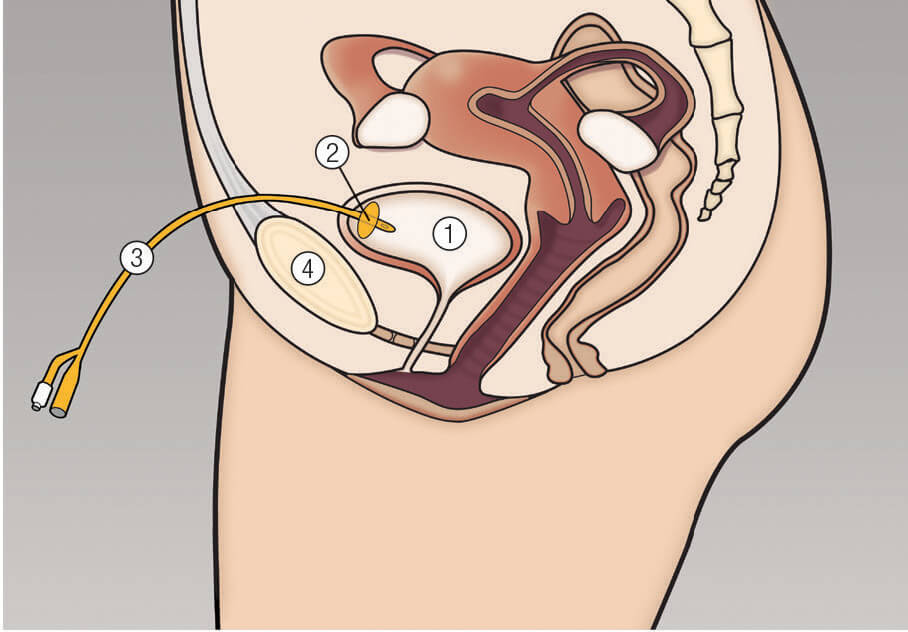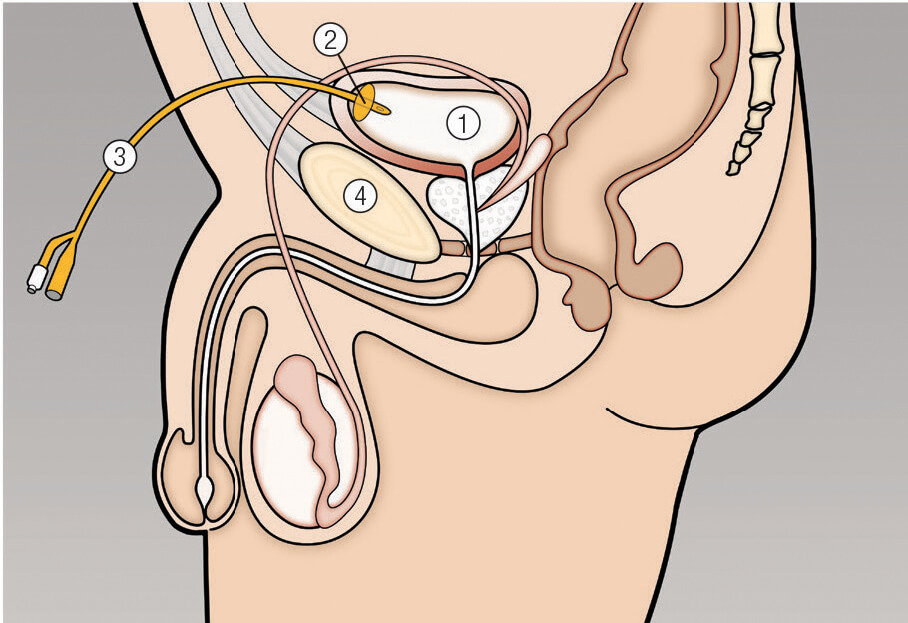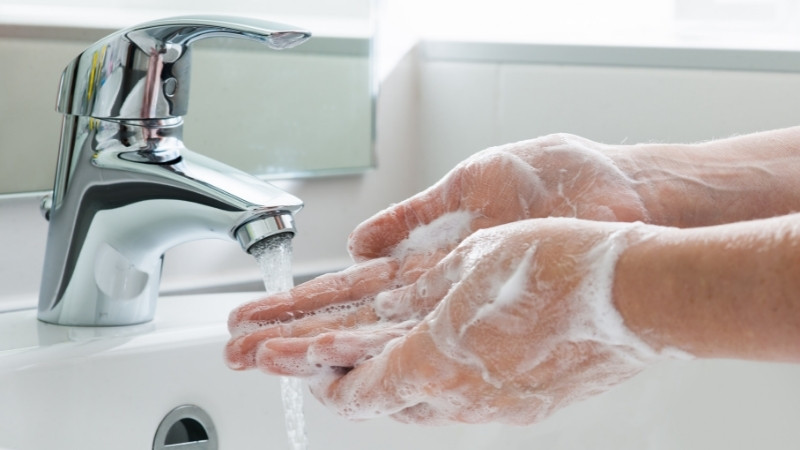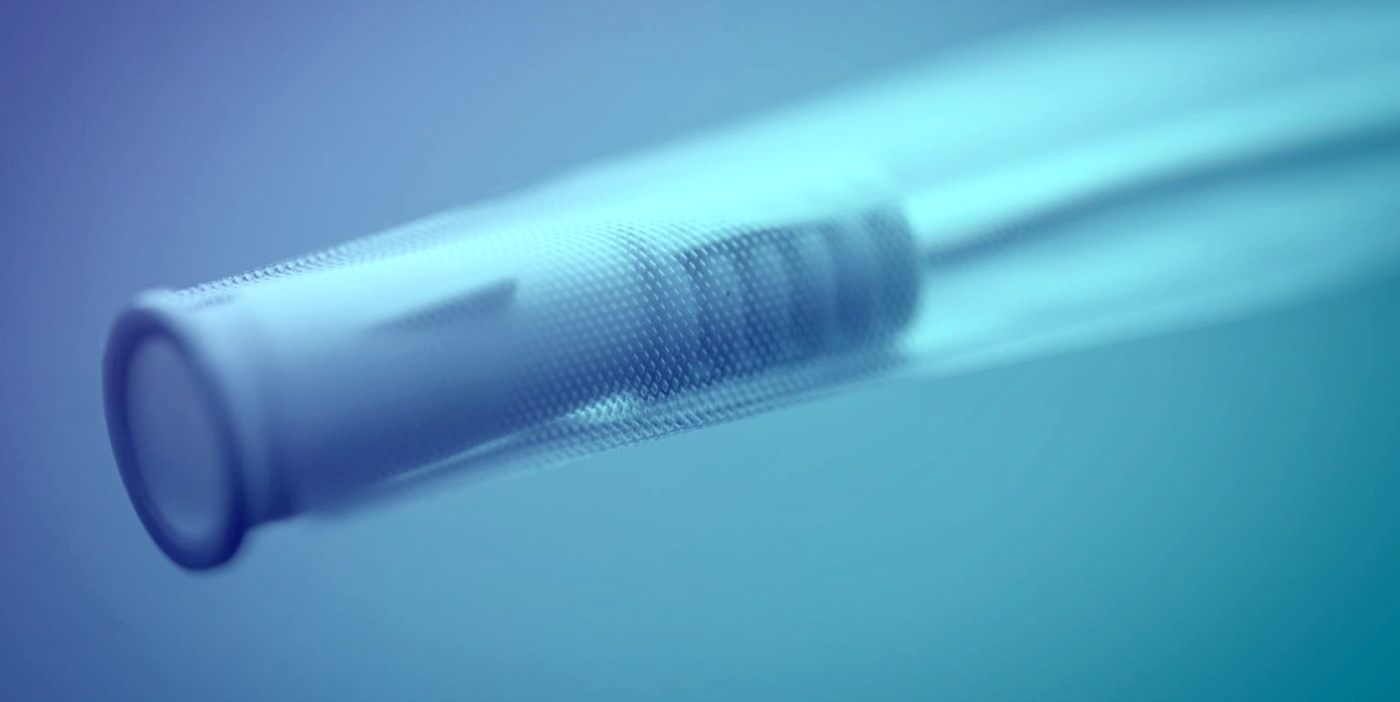What is a suprapubic catheter?
A suprapubic catheter is a hollow flexible tube that is used to drain urine from the bladder. It is inserted into the bladder through a cut in the tummy, a few inches below the navel (tummy button). This is done under a local anaesthetic or a light general anaesthetic.
Why would someone need a suprapubic catheter?
Anyone who cannot empty their bladder may need a catheter. A suprapubic catheter may be chosen because it is more comfortable and less likely to give you an infection than indwelling urethral catheters. For a visual reference, see the below pictures of a suprapubic catheter in situ for both male and female.
Suprapubic catheters are sometimes used for the following reasons:
- Urethral trauma (damage that has been caused to the urethra – the tube where urine comes out)
- People who require long-term catheterisation and are sexually active
- After some gynaecological operations e.g. surgery for prolapsed uterus or bladder, or surgery for stress incontinence
- Long-term catheterisation for incontinence. Although this is not recommended, sometimes medical staff feel it appropriate to avoid skin problems or other medical complications.
- Some wheelchair users or people who can’t self-catheterise find this method simpler to manage


Diagram Key:
1. Bladder
2. Retention Balloon
3. Catheter
4. Pubic Symphysis
Who inserts a suprapubic catheter?
The doctor will insert your first suprapubic catheter during the initial operation. A small balloon at the tip of the catheter is inflated to prevent it falling out. A doctor or nurse can change the catheter in your home, or in their surgery or urology department. You, or a member of your family, may also be taught to change the catheter. You must not try to remove it without medical advice.
What happens to the urine?
There are two options:
- Free drainage – where the urine drains out from the catheter and is then generally stored in a drainage bag.
- Catheter valve – a valve at the end of the catheter used in place of a drainage bag. Urine is stored in the bladder and is emptied through the catheter straight into the toilet or bag.
There are several different types of drainage bag: leg bags held in place with straps or in a holster and worn under your normal clothes during the day, night drainage bags which are attached to a leg bag at night, a Belly Bag is also appropriate to use with a supra-pubic catheter. This bag is attached to the catheter and held in place around the waist. A night drainage bag is much larger and is attached to the leg bag to hold all the urine that drains from the bladder overnight.
We have published an information sheet with further details of drainage bags in the downloads section.
How often does a suprapubic catheter need changing?
The first catheter change is usually always done in the hospital/clinic that put the catheter in. After this, it can vary from 4-12 week intervals depending on the type of catheter and your own situation and will usually be done by your nurse.
If the suprapubic catheter comes out unexpectedly, it must be replaced within a short time. Contact your doctor or nurse as soon as possible. Out of normal working hours, you should proceed to Accident & Emergency.

How do I look after my suprapubic catheter?
Always wash your hands before and after emptying your catheter bag, or before and after emptying your bladder using the valve. You should wash the area around the insertion site with cooled boiled water once or twice a day. Some people find cleaning the wound with a sterile saline solution a good method of keeping the area clean.
A dressing will cover the wound after the operation and you should keep it in place until the wound has healed. Although not always necessary, many people prefer to wear a dressing around the wound all the time. The type of dressing may vary, your healthcare professional will be able to advise you of an appropriate dressing. Do not put any creams or talc around the site. To prevent pulling, it may be advisable to secure the catheter to the abdomen with a fixation device or tape. Your health care professional will advise you if this is necessary and help you decide on the best method.
In order to prevent urinary infections and encourage drainage, you should ensure you have an adequate daily fluid intake (average being 1.5 to 2 litres). A good mix of fluid types is recommended i.e. water, squash and juice. Keep bladder-irritating drinks e.g. tea, coffee and fizzy drinks to a minimum. Cranberry juice can be helpful to prevent bladder infections but should be avoided if you are taking Warfarin. Try to avoid constipation – make sure that you include wholemeal bread, fruit and vegetables in your diet.
It is better to take showers rather than baths as sitting in water for long periods may delay the wound from healing. For the first few days after the operation, you should keep a waterproof dressing on. Once the wound has healed it is perfectly okay to shower normally, although avoid using scented products as these can irritate the skin.
What kind of problems should I watch out for?
Here are some of the problems to watch for:
- Urine stops draining out of the catheter
- You feel unwell with pain, fever and abdominal discomfort
- Urine is leaking around the catheter – this can be normal around a new catheter site
- The area around the catheter becomes red and sore
- Bleeding. It is not unusual to see blood in the urine following a change of catheter but this usually settles in 24 hours.
Occasionally the skin around the catheter heals over and small skin tags form. If they become problematic i.e. bleed easily and interfere with catheter changes, they can be treated by your healthcare professional.
Some healthcare professionals recommend turning the catheter when cleaning the area to help prevent the catheter sticking to the bladder wall. If you notice anything unusual or feel unwell, contact your doctor or nurse.








